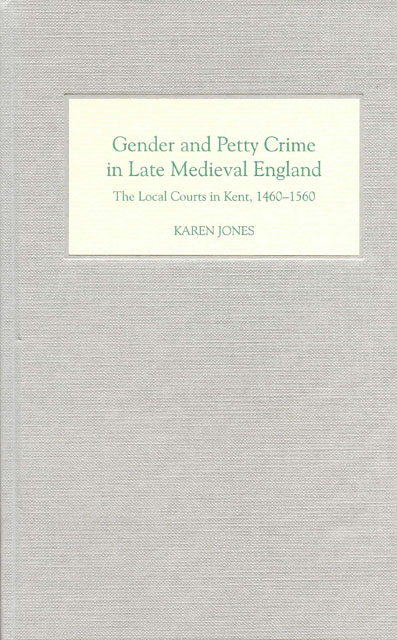6 - Gendered Crimes
Published online by Cambridge University Press: 23 March 2023
Summary
The topics covered in previous chapters – property offences, physical and verbal violence and sexual offences – all involved both men and women, though to varying degrees, and featured often enough in the court records to justify analysis at some length. Some other categories of offence have been treated as outside the scope of this book. These include failures to carry out obligations which were imposed only or mainly on men: failing to possess or practise with bows and arrows, failure to keep watch, or to perform the duties of local office-holding, secular or ecclesiastical. Since most householders were men, it was mostly men who were accused of the commonest offences in the secular jurisdictions, those usually defined as nuisances. Occasionally, though, a wife was accused of fouling a common water-supply, and a few widows of failing to perform their duties as householders. Presentments for nuisance consist largely of a tedious and repetitive catalogue of neglect to scour watercourses, remove dungheaps, or cut back overhanging branches. Some nuisance cases give a more startling glimpse of medieval urban life, like the pig-owners fined for allowing their animals to run riot in their neighbours’ gardens, or of the Canterbury innkeeper who ‘permits a certain dead horse to lie in his garden near the street … putrefying there’.
Apart from nuisances, there remain a few offences which could theoretically be committed by men or women, but in practice were largely gendered and which appear in relatively small numbers in the court records. Prominent among these are witchcraft, sabbath-breaking, gaming and vagabondage or ‘idleness’. The first was a predominantly female offence, and the remainder chiefly male. This chapter focuses on these offences, and concludes that the prosecution of witchcraft has some similarity to prosecutions for scolding and defamation, and like them followed a gendered pattern well before the early modern ‘witch craze’. Cases of witchcraft, scolding or defamation suggest anxiety about the harm women might do with words, while prosecutions for non-observance, gaming and vagabondage all demonstrate in different ways the importance attached to the work of men.
Witchcraft
Before discussing witchcraft, some explanation of terminology is needed. Modern writers generally use ‘magic’ or ‘sorcery’ for medieval cases, and ‘witchcraft’ for early modern ones, or refer to practitioners of ‘white magic’ as ‘cunning folk’, reserving ‘witches’ for those alleged to have done harm by supernatural means.
- Type
- Chapter
- Information
- Gender and Petty Crime in Late Medieval EnglandThe Local Courts in Kent, 1460-1560, pp. 172 - 195Publisher: Boydell & BrewerPrint publication year: 2006

